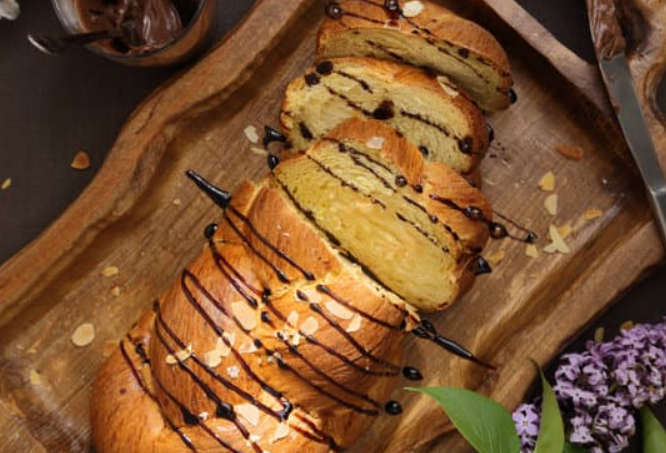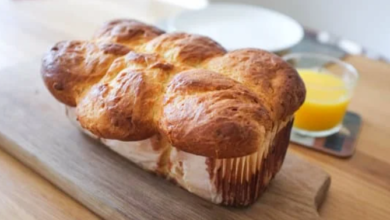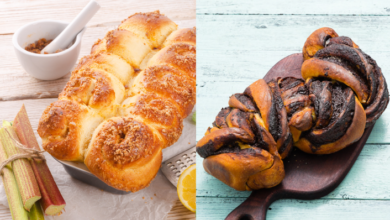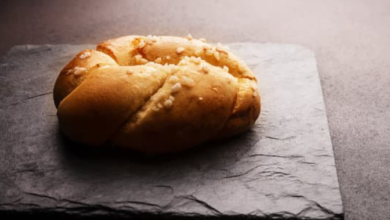Is Brioche A Quick Bread Or A Scone? You Decide

What To Know
- Brioche requires a longer rising time, resulting in a lighter, more open crumb, while quick breads rise quickly and have a denser, more compact texture.
- The categorization of brioche as a quick bread or a yeast-raised bread depends on the specific criteria used for classification.
- Whether it is considered a quick bread or a yeast-raised delicacy, it remains a beloved pastry enjoyed by food enthusiasts worldwide.
Brioche, a delectable pastry renowned for its golden crust and fluffy interior, has sparked a long-standing debate among culinary enthusiasts: is it a quick bread or a yeast-raised marvel? This blog post delves into the intricate world of brioche, exploring its ingredients, preparation methods, and the factors that determine its categorization.
Ingredients and Preparation: Unveiling the Secrets
Brioche typically consists of flour, sugar, butter, eggs, and yeast. The dough is kneaded until it becomes smooth and elastic, then left to rise before being shaped into various forms. Unlike quick breads, which rely on chemical leavening agents like baking powder or baking soda, brioche owes its airy texture to the action of yeast.
The Role of Yeast: A Biological Leavening Agent
Yeast, a microscopic fungus, consumes sugars in the dough and releases carbon dioxide gas. This gas creates tiny pockets of air within the dough, causing it to expand and rise. The fermentation process also contributes to brioche’s distinctive flavor and aroma.
Distinguishing Characteristics of Quick Breads
Quick breads, on the other hand, do not employ yeast as a leavening agent. Instead, they rely on the reaction between baking powder or baking soda and acidic ingredients like buttermilk or lemon juice. This reaction produces carbon dioxide gas, resulting in a quick rise and a denser, more crumbly texture.
Similarities and Differences: A Comparative Analysis
While brioche and quick breads share some similarities, such as their use of flour and sugar, they differ significantly in terms of leavening agents, preparation methods, and textures. Brioche is yeast-raised, while quick breads rely on chemical leavening agents. Brioche requires a longer rising time, resulting in a lighter, more open crumb, while quick breads rise quickly and have a denser, more compact texture.
Culinary Applications: A Taste of Versatility
Brioche’s versatility extends beyond its unique flavor and texture. It can be transformed into a variety of delectable treats, including:
- Traditional Brioche: The classic French loaf, perfect for breakfast or afternoon tea.
- Brioche Rolls: Smaller individual rolls, ideal for sandwiches or sliders.
- Brioche Doughnuts: A sweet and airy indulgence, often glazed or filled.
- Brioche Buns: Soft and fluffy buns, perfect for burgers or pulled pork.
- Brioche French Toast: A decadent breakfast or brunch dish, featuring thick slices of brioche soaked in a custard mixture.
Factors Influencing Categorization: A Matter of Perspective
The categorization of brioche as a quick bread or a yeast-raised bread depends on the specific criteria used for classification. Some culinary experts may consider brioche a quick bread due to its rapid rise compared to traditional yeast-based breads. However, others may classify it as a yeast-raised bread based on the use of yeast as the primary leavening agent.
Key Points: Embracing the Culinary Spectrum
Brioche stands as a culinary masterpiece that transcends the rigid boundaries of classification. Whether it is considered a quick bread or a yeast-raised delicacy, it remains a beloved pastry enjoyed by food enthusiasts worldwide. Its unique flavor, texture, and versatility make it a staple in bakeries and kitchens alike.
What People Want to Know
1. What is the main difference between brioche and quick bread?
Brioche is yeast-raised, while quick bread relies on chemical leavening agents.
2. Why does brioche have a lighter texture than quick bread?
Yeast produces carbon dioxide gas, creating tiny pockets of air within the dough, resulting in a lighter texture.
3. What is the best way to store brioche?
Store brioche in an airtight container at room temperature for up to 3 days.
4. Can I freeze brioche?
Yes, brioche can be frozen for up to 2 months.
5. How do I reheat brioche?
Reheat brioche in a preheated oven at 350°F (175°C) for 10-15 minutes or until warmed through.





